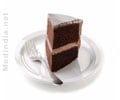Beans and rice, the classic food combo in many parts of the world, can reduce postprandial glycemic elevations in people with type 2 diabetes, according to an American study published in the Nutrition journal.
Diet and lifestyle changes are very important interventions to prevent and control type 2 diabetes.Beans are high in protein, omega-3 fatty acids and anti-oxidants, and low in fat. They are also good sources of iron, folate, magnesium and zinc. Earlier studies found that beans have some action similar to the diabetes medication, acarbose.
It is also known that beans have a low glycemic index (GI) which means they produce a relatively low rise in blood glucose after a meal. However, white rice has a high GI and can cause postprandial glycemic elevations, which damage the tissues and other organs.
So, to find out if the postprandial glucose values are lowered by beans and rice combo diet, American researchers, Sharon Thompson, Donna Winham, and Andrea Hutchins, compared the glycemic response of beans and rice meals with rice alone in adult type 2 diabetics.
Data from seventeen men and women, with type 2 diabetes controlled on metformin or diet / exercise, between the ages of 35 and 70 years was analysed in this study. The researchers selected pinto beans (Glycemic Index = 45), black beans (GI = 20) and red kidney beans (GI = 20) and long grain white rice (GI = 80) for their study. Participants received the four test meals in random order. Three meals included pinto beans, black beans or dark red kidney beans along with half a cup of white long grain rice respectively. The amount of beans was standardized to provide 50g of carbohydrates while the weight of the white rice was kept constant. The fourth meal was the control meal which included 180g of steamed long grain white rice. Meals were consumed at breakfast after a 12-hour fast.
Capillary blood glucose concentrations at baseline and at 30 minute intervals up to 180 minutes following the meal were collected. The results of the study were analyzed statistically.
The findings are in agreement with other studies that show intermediate responses with mixed meals of high and low GI foods.
• All three test meals reduced the average 2-hour postprandial glucose below 140 mg/dl, the International Diabetes Federation recommended glycemic control goal.
• Counseling patients to exclude cultural foods like the bean and rice combination may be unwarranted for persons with type 2 diabetes, especially in the U.S., Latin America, and Mediterranean and Middle East countries.
• The three different beans varieties exhibited significantly different levels of glycemic response. The pinto and black bean and rice combinations produced a lower glycemic response overall than the dark red kidney bean and rice meal.
The authors suggested that it is important to investigate multiple bean varieties rather than assuming all are the same.
'Dietary recommendations, materials and counseling should be culturally sensitive and take into account valued traditional foods such as beans, especially when the scientific evidence supports their beneficial role in the diet', concluded the researchers.
They further add – 'While promoting traditional foods is a non-pharmacological way to manage type 2 diabetes, knowing which beans are most effective can help improve dietary adherence with an appropriate cultural twist'.
Source: Thompson SV, Winham DM, Hutchins AM. Bean and rice meals reduce postprandial glycemic response in adults with type 2 diabetes: a cross-over study. Nutr J. 2012 Apr 11;11(1):23. http://www.nutritionj.com/content/pdf/1475-2891-11-23.pdf
Source-Medindia















